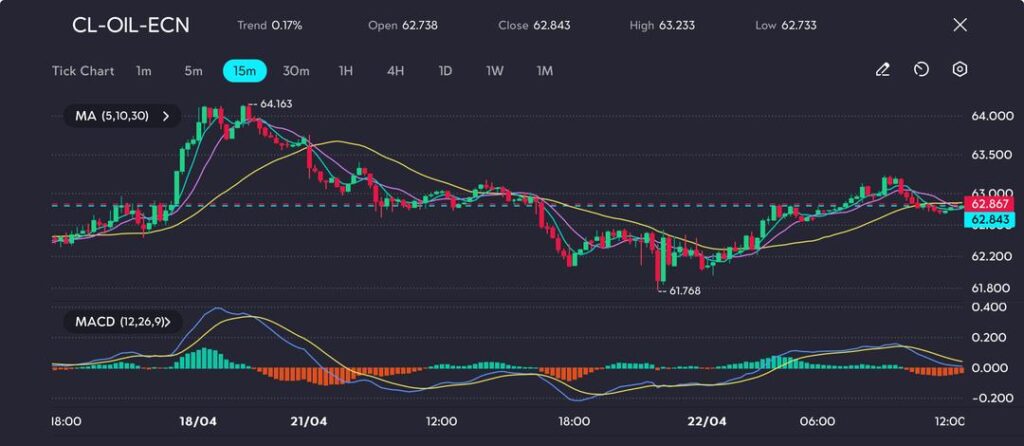
Oil prices are moving in a tug of war between supply and demand concerns, as market participants weigh geopolitical tensions, central bank signals, and the potential return of Iranian crude. While recent volatility has triggered cautious buying, overall sentiment remains fragile, with traders keeping a close eye on global developments that could sway the market in either direction.
Crude oil prices saw a modest recovery on Tuesday, with West Texas Intermediate (WTI) June futures rising by 0.7% to USD 62.84 after experiencing a sharp 2% drop in the prior session.
The rebound was primarily driven by short covering, as traders locked in gains on bearish positions amid lingering concerns over global risk appetite.
Market outlook remains cautious, with fears of a potential recession fuelled by tariff tensions and uncertainty surrounding US monetary policy.
Comments from President Trump urging the Federal Reserve to cut interest rates have renewed concerns about the central bank’s independence.
As a result, US equity markets declined, and the dollar index fell to a three-year low, clouding the outlook for energy demand.
Meanwhile, progress in US–Iran nuclear negotiations continues to cap oil’s upside potential. If sanctions are lifted, the return of Iranian crude could increase global supply and weigh on prices.
Reflecting these concerns, Russia has revised its 2025 Brent crude forecast down by 17%, signalling expectations of a supply-heavy market environment.
WTI crude surged to a high of USD 64.16 before entering a corrective phase, retreating to a recent low of USD 61.77.

The current price action, hovering near USD 62.84, shows a cautious attempt to reclaim lost ground, now testing resistance at key short-term moving averages.
Technical indicators reflect mixed momentum. The MACD shows diminishing bullish strength, with its histogram flattening and signal lines tightening—suggesting possible consolidation or a pause in direction.
Meanwhile, the convergence of 5-, 10-, and 30-day moving averages highlights indecision in the market, awaiting a fresh catalyst.
Key resistance is located at USD 63.23, while support lies between USD 62.00 and 61.77. A decisive move above resistance could revive bullish sentiment, while a breakdown below support might signal further downside.
With WTI crude caught between weakening demand concerns linked to trade policies and supply-side risks from Iran, the market may remain range-bound between USD 61 and USD 64 in the short term.
Traders will closely monitor upcoming EIA and API inventory data, while broader price direction could be influenced by Federal Reserve signals and geopolitical developments.
Click here to open account and start trading.